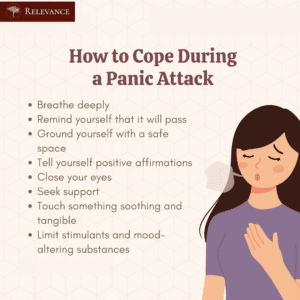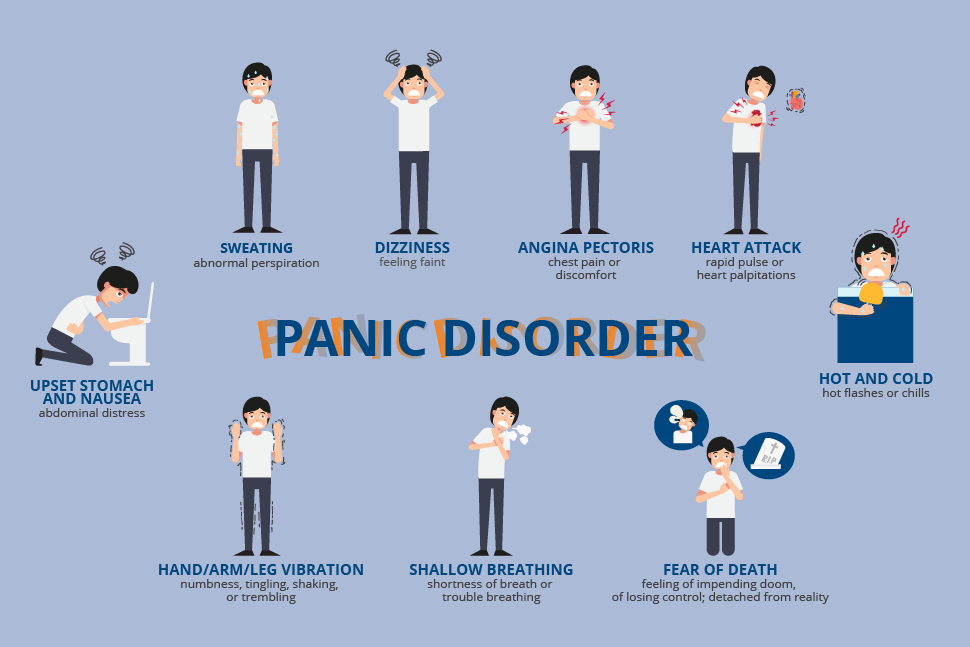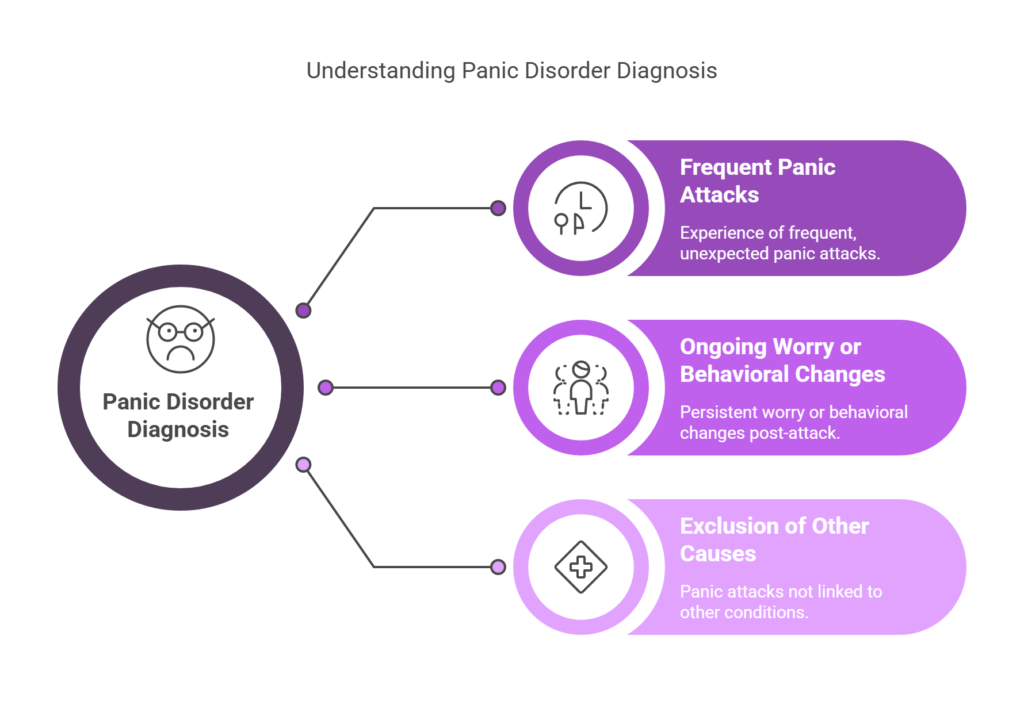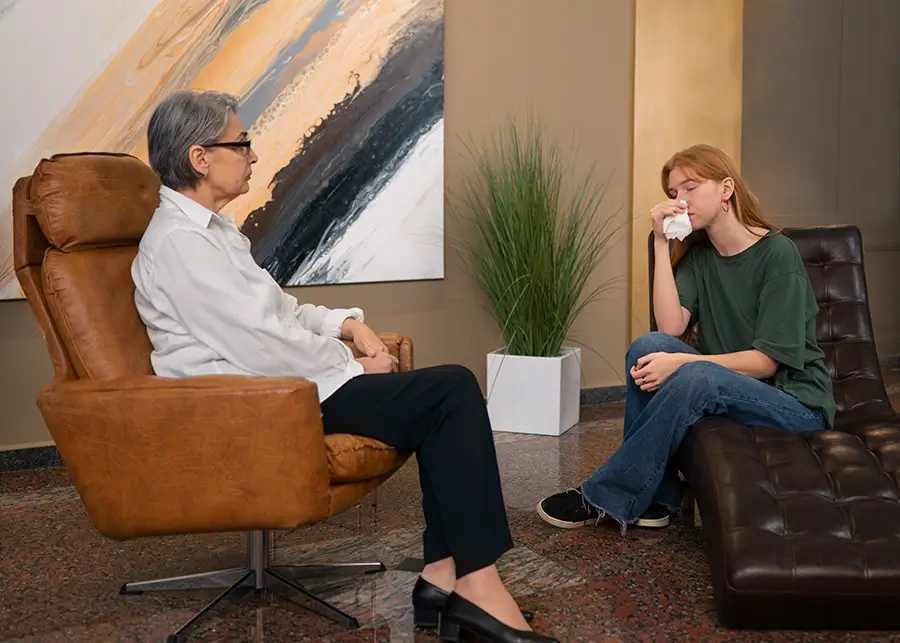Have you ever felt those heart-pounding moments of sheer fear and anxiety that come out of nowhere, leaving you helpless inside out? As an adult or an elderly being, these occurrences can be not only inexplicable but also concerning. In this comprehensive guide, we aim to address treatment for panic attacks in adults and offer perceptivity into the world of panic attacks.
Panic attacks can affect anyone, but in the context of adults and the elderly, they can be especially challenging. These sudden episodes of intense fear and anxiety can disrupt daily life, leading to distress and a decreased quality of life.
In this comprehensive guide, we will explore the causes, symptoms, diagnosis, and effective treatments for panic attacks in adults and the elderly.
Panic attacks can leave you feeling trapped in a cycle of fear!

Causes of Panic Attacks in Adults/Elderly
Panic attacks in the elderly can have various underlying causes. Understanding these causes is essential for the effective treatment of panic attacks in adults. Here are some of the common causes of panic attacks in the elderly:
1. Physical Health Conditions: Elderly individuals often have underlying physical health issues, and some of these conditions can trigger panic attacks. Cardiovascular problems, respiratory disorders, and chronic illnesses can lead to symptoms that mimic panic attack symptoms, such as shortness of breath, chest pain, or palpitations.
2. Medication Side Effects: Many elderly individuals are on multiple medications to manage chronic health conditions. Some medications can have side effects that include anxiety, nervousness, or panic-like symptoms. It’s important to consider the potential impact of medications on panic attacks.
3. Cognitive Changes: Age-related cognitive changes, such as mild cognitive impairment or early-stage dementia, can lead to increased anxiety and confusion. Individuals may struggle to express their feelings, which can be frustrating and lead to panic-like episodes.
4. Life Transitions: Major life transitions, such as retirement, loss of a loved one, or relocation to a care facility, can trigger panic attacks. These changes can be emotionally challenging and lead to feelings of fear and anxiety.
5. Social Isolation: Many elderly individuals face social isolation, especially if they live alone or in long-term care facilities. Loneliness and a lack of social interaction can contribute to anxiety and panic attacks.
6. Past Trauma: Preexisting anxiety disorders or a history of traumatic experiences can resurface or become more pronounced as individuals age. Unresolved trauma or anxiety can be a significant factor in panic attacks.
7. Fear of Aging: The natural fear of aging and the uncertainties that come with it, such as declining health or loss of independence, can be a source of anxiety and panic attacks.
8. Sensory Changes: Aging can lead to sensory changes, such as decreased hearing or vision. These changes can sometimes make elderly individuals more sensitive to certain environmental stimuli, potentially triggering panic attacks.
It’s important to recognize that the causes of panic attacks in adults can be multifaceted and may vary from person to person. Additionally, individuals may be less likely to seek help for mental health issues due to stigma or lack of awareness. Understanding these potential causes and taking a compassionate, individualized approach to treatment is crucial for effectively addressing and managing panic attacks in the elderly. If you or someone you know is experiencing panic attacks, seeking support from a healthcare professional is recommended to explore suitable treatment options for panic attacks in adults and the elderly.

Common symptoms of Panic Attacks
Panic attacks are characterized by a combination of physical and psychological symptoms, typically peaking within a few minutes and then gradually subsiding. These symptoms are consistent across different age groups, but it’s essential to consider how they may be experienced by adults and the elderly.
The common symptoms of panic attacks include:
1. Intense Fear: The most prominent feature of a panic attack is an overwhelming sense of fear and impending doom. This fear can be paralyzing and irrational, making it difficult to control one’s thoughts and emotions.
2. Rapid Heartbeat: Heart palpitations and a pounding heart are common during a panic attack. This symptom can be particularly distressing, especially for the elderly, as it may lead to concerns about heart health.
3. Shortness of Breath: Many individuals, regardless of age, experience difficulty breathing during a panic attack. They may feel as though they are choking or suffocating, adding to the distress.
4. Sweating: Profuse sweating, even in a cool environment, is a typical symptom. It can be uncomfortable and lead to a sense of losing control.
5. Trembling or Shaking: Uncontrollable trembling or shaking, especially in the hands and legs, can occur during an episode, exacerbating feelings of helplessness.
6. Chest Pain or Discomfort: Chest pain or discomfort is a common symptom, often mistaken for a heart attack. In the elderly, this can be especially alarming.
7. Nausea or Abdominal Distress: Some people may feel nauseated or experience stomach discomfort during a panic attack, contributing to overall discomfort.
8. Dizziness or Lightheadedness: Feeling faint or dizzy is another common symptom, adding to the sense of losing control over one’s body.
9. Hot Flashes or Chills: Sudden sensations of heat or cold can accompany panic attacks, intensifying the overall distress.
10. Fear of Losing Control or Going Crazy: Many individuals, regardless of age, fear that they are losing their sanity during an attack, adding to the emotional turmoil.
11. Fear of Death: Some may feel as though they are about to die during a panic attack, intensifying the sense of impending doom.
12. Numbness or Tingling: Sensations of numbness or tingling in the extremities can be reported, contributing to the overall discomfort.
Age-Specific Considerations
Understanding the unique characteristics of panic attacks in adults and the elderly is crucial for effective support and treatment:
In the elderly, physical health issues can lead to a heightened focus on physical symptoms, potentially making chest pain or shortness of breath more distressing.

Cognitive changes associated with aging may impact how elderly individuals interpret and express their fear and discomfort during a panic attack.
Older individuals may be more vulnerable to feelings of helplessness or a fear of dying, as these concerns can become more salient with age.
Diagnosis and effective treatments for panic disorder in adults and the elderly.
Diagnosing and treating panic disorder in adults and the elderly is a critical aspect of mental healthcare. Panic disorder is characterized by recurrent and unexpected panic attacks, which can be debilitating if left untreated.
Diagnosis:
To diagnose panic disorder, healthcare professionals typically follow a structured process:
1. Clinical Assessment: This begins with a comprehensive clinical evaluation. It includes taking a detailed medical history, conducting a psychiatric assessment, and discussing the patient’s symptoms and concerns.
2. Symptom Evaluation: Panic attacks are marked by sudden and intense fear or discomfort, often accompanied by a range of physical and cognitive symptoms. The diagnosis of panic disorder is generally established when specific criteria are met:
– Recurrent, unexpected panic attacks.
– At least one attack is followed by one month or more of persistent worry about having another attack or its consequences.
– Symptoms are not attributable to a substance or a medical condition.
3. Ruling Out Medical Conditions: It’s crucial to rule out other medical conditions that could mimic panic-like symptoms, such as cardiac problems, hyperthyroidism, or respiratory disorders.
4. Comorbid Conditions: Many individuals with panic disorder also experience comorbid conditions like depression, generalized anxiety disorder, or substance use disorders. These should be assessed and addressed in the treatment plan.
Treatment:
Effective treatment options for panic disorder include:
1. Cognitive-Behavioral Therapy (CBT): CBT is considered the gold standard treatment for panic disorder. It helps individuals recognize and modify negative thought patterns and behaviors associated with panic attacks. Cognitive behavioral therapy (CBT) can be modified in the elderly to accommodate the cognitive changes that occur with age.
2. Medication:
– Selective Serotonin Reuptake Inhibitors (SSRIs): Medications like sertraline, fluoxetine, and paroxetine are frequently prescribed to manage panic disorder. These are generally considered safe for both adults and the elderly.
– Benzodiazepines: These may be prescribed for short-term relief but should be used with caution, as they can be habit-forming and may have more side effects in older adults.
Additional Therapies:
3. Exposure Therapy: Gradual exposure to situations or triggers that induce panic can help desensitize individuals to these stressors.
4. Relaxation Techniques: Techniques such as deep breathing exercises, progressive muscle relaxation, and mindfulness can aid in anxiety management and reducing the severity of panic attacks.
5. Lifestyle Adjustments: Encouraging patients to maintain regular physical activity, a balanced diet, and adequate sleep is essential. Reducing the intake of caffeine and alcohol can also be beneficial.
6. Supportive Strategies: Patients should be encouraged to involve their support networks, as social support plays a significant role in managing panic disorder.
7. Follow-Up Care: Regular follow-up visits with healthcare providers or mental health professionals are crucial to monitor progress, make necessary treatment adjustments, and address any side effects or concerns.
Your Path to Recovery Begins Here
The Final Say:
To sum it up, personalized care is pivotal in the diagnosis and treatment of panic disorder, taking into account the unique circumstances and needs of each individual. Additionally, when it comes to older people, doctors need to be careful because some medications can interact with age-related changes. They might need to start with smaller doses to avoid problems.









